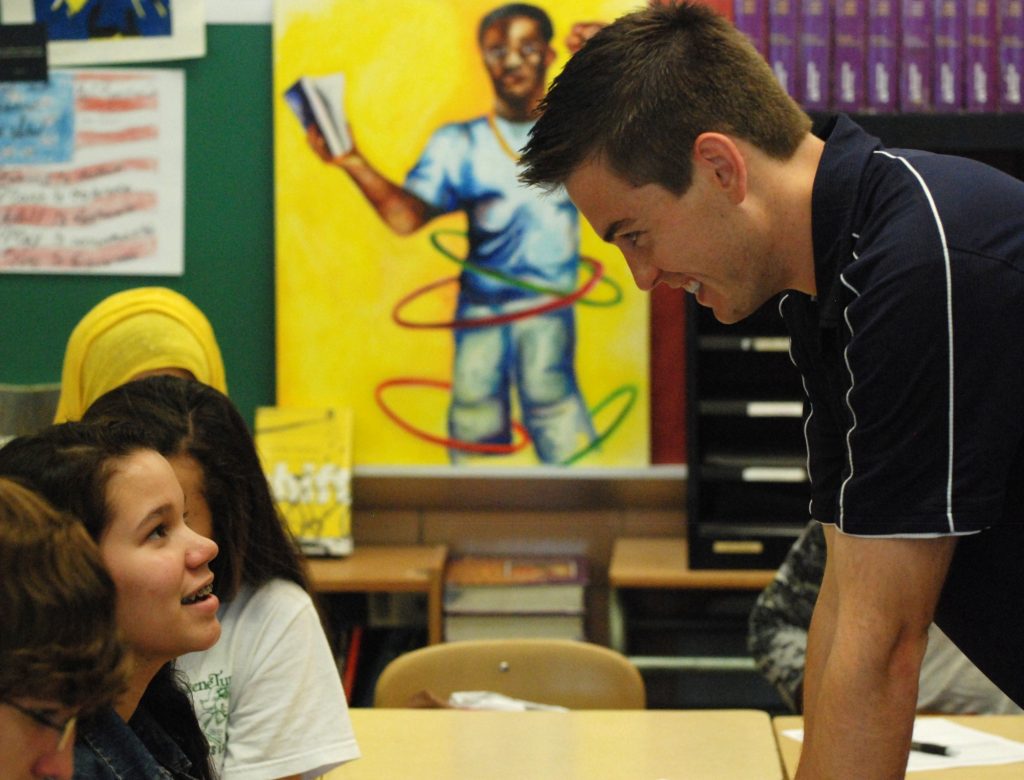If I Was Governor for a Day…
What would Baltimore County teacher (and 2014 National Teacher of the Year) Sean McComb lead on if he was governor for a day?

Taylor Mali famously captured the hearts of teachers with his empowering response to the question, “What do you make?” This common question and one’s response says something about our values and how we define ourselves and our work.
Contrast this with the Masai people of southern Kenya and northern Tanzania. They greet one another with, “casserian engeri,” which is translated as, “and how are the children?” This question is also a cultural value statement, one that says monitoring the wellbeing of their children is key to future health and prosperity.
If I were governor, I would start with the same question: “how are the children?”
As someone who works with students in the classroom, I can tell you that they are as dynamic, intelligent, and capable as ever. But, I do have concerns about how their well-being. In November of last year TIME magazine ran a cover story: “anxiety, depression and the modern adolescent.” The subtitle was: “why the kids are not alright.”
I fought tears the first time I read the story. If we can stifle the impulse to dismiss anxiety as kids being “soft” and look at their experiences with empathy, it reveals incredible challenges. “We’re like little volcanoes. We’re getting constant pressure, from our phones, from our relationships, from the way things are today,” one student interviewed in the TIME article shared. And while I can’t do the story full justice here (and urge you to read it for yourself) two insights struck me. One, for teenagers today, as much as we may not like it and find it difficult to relate, there is no firm line between their real and online worlds. Social media slights, cyber-bullying, and subtle disses affect them — whether we like it or not, accept it or not, and help them deal with it or not. Second, being a teenager today is different than even when I was one in the late 90’s. They grow up in a world where all they have ever known is for school shootings to be a regular occurrence, for the economy and living wages to be uncertain, for America to be entangled in war, and for heavy, important, existentially demanding issues such as climate change, racism, sexism, and terrorism to be beamed onto screens before them every day.
And given all that, how are the children? One in four girls between the ages of 12 to 17 has experienced at least one major depressive episode in the past year. One in four teens between 13 and 18 has experienced an anxiety disorder. This is an epidemic. And our response to the needs of our children says more about who we are as a people than anything else.
If I were the governor of Maryland I would act on this issue in two ways.
First, while not as shameful as other states in the country, Maryland’s school counselor to student ratio of 371 to one is far beyond the American School Counselor Association’s recommendation of 250 to one. The mental health of our students — our children — cannot be understated. It is an incontrovertible prerequisite to learning and we must have the counselors, psychologists, and pupil personnel workers on staff to meet the demands of our times.
Second, students in Maryland who are admitted to residential facilities for mental health treatment typically have only an intake meeting between release and re-enrollment back into a full school day. We can provide additional and more frequent supports for students transitioning back to school. We don’t have to look far for a better way; our neighbors in Pennsylvania practice a more gradual reintegration process where students receive ongoing wrap-around services. This may take the form of intensive outpatient therapy, such as with The Light Program in Chester County, or partial hospitalization services where the same case worker supports the student with visits at school and with family-based services at home.
Maryland has so much going for it as a state — from the mountains and lakes of Western Maryland, to the Bay and the Shore and the commerce of the I-95 corridor. But our children are by far our most valuable resource. We have to recognize that they are not experiencing a similar adolescence to that we knew and it’s our responsibility to give them the support they need.
Learn more about Sean at his website, www.seanmccomb.com, and make sure to follow him on Twitter.

